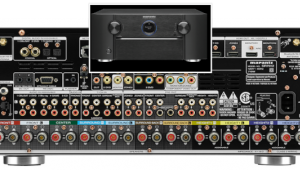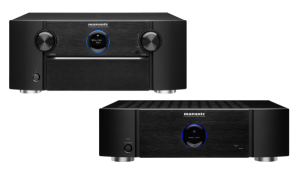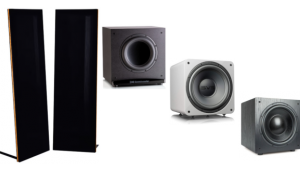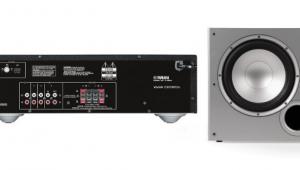3D Projectors, HDMI Problems, Skipping Commercials

I know that this was the year of 3D displays at CES, but all of those were LCDs and plasmas. Has there been any word from projector manufacturers producing 3D-ready home-theater projectors? I'm sure the effect will be much more spectacular than any flat panel.
Trent Tunstell
There were some 3D front-projection demos at the show, but the ones I saw were not as impressive as many of the flat panels. For me, the biggest drawback of the front-projection systems being demonstrated at CES was that they used passive polarized glasses, which make the picture look significantly worse than the active shutter glasses used by virtually all direct-view displays, including LCDs, plasmas, and Mitsubishi's RPTVs. Plus, any such projection system needs a special silver screen that isn't ideal for 2D projected images.
At CES, Optoma showed a consumer-oriented, 3D-capable projector, and JVC demonstrated 3D from twin 4K projectors, but that system is prohibitively expensive for all but the most well-heeled consumers. Digital Projection has also demonstrated high-end 3D front projectors using both passive and active glasses, but not at CES. We should see more 3D projection systems at CEDIA in September.
HDMI Woes
I have a problem with my home theater system. My PS3 is connected via HDMI to a Pioneer Elite VSX-94TXH receiver, and the receiver connects via HDMI to a Pioneer Elite PRO-111FD TV. The PS3 won't do 1080p. I also have a TViX M6500 media player, which is capable of doing 1080p, but this causes small traces of "snow" on the screen, so I have to dumb it down to 1080i. My Pioneer Blu-ray player plays 1080p without any issues. Do you have any thoughts or suggestions on how I can fix this?
Robert Fazekas
I don't know why you say the PS3 won't do 1080p—it can output 1080p just fine. When you mention "snow" on the screen, my first thought is that one of the HDMI cables in the TViX signal chain is too long. Using HDMI cables that are too long can result in what I've heard called "sparklies," which I suppose could also be described as "snow." And you imply that setting the TViX box to 1080i solves the problem, which could support this notion, since 1080i sends only half as much information as 1080p/60 in a given time period, which does not push the bandwidth limits of a long cable as much as 1080p.
You say this problem does not occur when using the Pioneer Blu-ray player, so I wonder about the lengths of the cables from the player and TViX box to the AVR. Is the cable from the TViX box significantly longer than the one from the player? If so, that could well be the problem. In general, use the shortest possible HDMI cables in the system and see if that helps.
Skipping Commercials = Theft
My old Panasonic VCR has a Commercial Advance function. After a recording is complete, the VCR marks the tape with the commercial segments, and when you play the recording, it automatically fast-forwards through the commercials.
By contrast, I can skip one minute forward and 30 seconds backward on my Dish DVR, but I haven't heard of any DVR that can skip commercials automatically. Why can't the same principal be applied to DVRs? I guess this should not be difficult, since a DVR is basically a computer.
Larry Haskin
Actually, it's very easy for DVRs to skip commercials entirely; in fact, the old Replay DVRs used to do it until the broadcasters legally forced them remove this feature so people couldn't skip commercials so easily. After all, commercials are what pay for a fair chunk of TV programming, and according to Jamie Kellner, former CEO of Turner Broadcasting, "Any time you skip a commercial...you're actually stealing the programming." Now, DVRs are limited to skipping 30 seconds or a minute at a time.
If you have a home-theater question, please send it to scott.wilkinson@sorc.com.




























































